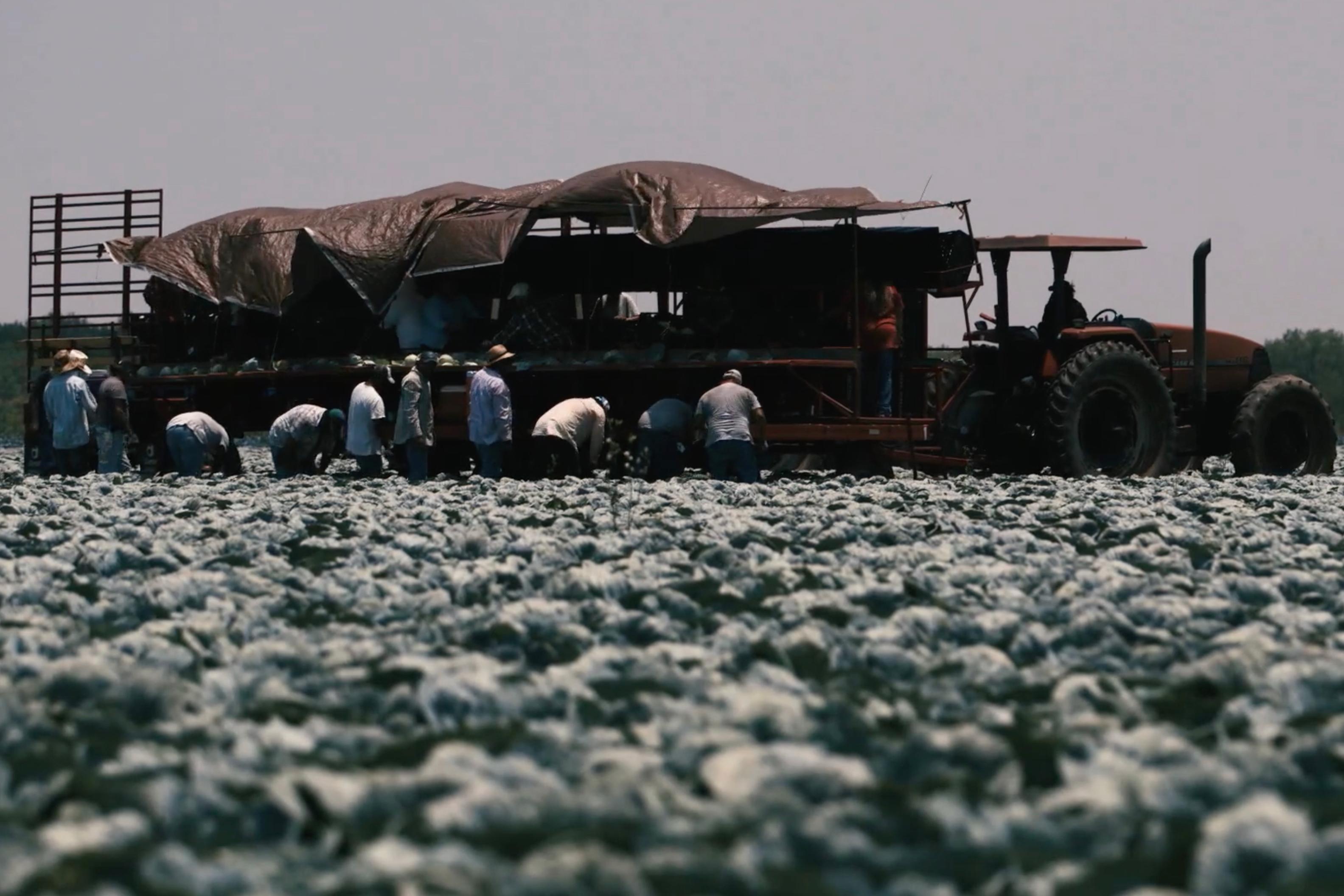[ad_1]
On a sweltering afternoon in July 2020, Belinda Ramones got a call that her brother was in the hospital. The call was from a woman at the Florida landscaping business that he had joined that week, the Davey Tree Expert Co., Ramones said. By the time she arrived, she said, “My brother was swollen up from hands to toes.”
Two days later, her brother, Jose Leandro-Barrera, died at age 45 with acute kidney failure caused by heatstroke, according to a report from the Hillsborough County medical examiner. His temperature in the ambulance had been 108 F, said the report.
It described the circumstances preceding his death, as recorded by a nurse. At the jobsite, Leandro-Barrera had advised his supervisor that he was not feeling well, and the supervisor told him to sit in a vehicle until he felt better. While there, he “urinated himself, had seizure like activity” and became unresponsive.
“Employee suffers from heat exhaustion while doing landscaping,” said an investigation into the incident from the Occupational Safety and Health Administration. The agency issued a $9,639 fine to the Davey Tree Expert Co. The company did not respond to requests for comment.
Without national regulations on preventing heat-related illness and death, OSHA has difficulty, in general, protecting workers before it’s too late, said Paloma Rentería, a Department of Labor spokesperson.
Laborers have suffered as summers have grown progressively hotter with climate change. But health policy and occupational health researchers say that worker deaths are not inevitable. Employers can save lives by providing ample water and breaks and building in time for new workers to adjust to extreme heat.

This is the logic behind proposed national rules that President Joe Biden set in motion in 2021, aiming to protect an estimated 36 million workers exposed to extreme heat. The Bureau of Labor Statistics counts about 480 worker deaths from heat exposure each year, on average. But these are “vast underestimates,” according to OSHA, because heat stress is an underlying factor often unaccounted for in medical records.
The advocacy organization Public Citizen estimates that as many as 2,000 U.S. workers die of heat annually, based on extrapolations from heat injury data.
Both estimates are upsetting, said Linda McCauley, dean of the nursing school at Emory University and an occupational health researcher. “No one should go to work expecting that they might die,” she said.
The proposed rules — a heat standard from OSHA — reaches a milestone Dec. 30, when the public comment period closes. But it’s unlikely to be finalized before Biden leaves office.
Vice President Kamala Harris would likely carry the heat rules forward if she wins the presidency next month, said Jordan Barab, who was OSHA’s deputy assistant secretary during the Obama administration. She advanced heat regulations in California in 2020.
Should Donald Trump win, the rules would stall, Barab predicts. In general, Republicans have opposed workplace safety regulations over the past 20 years, saying they are costly to businesses and consumers. And during the first Trump administration, the number of OSHA inspectors tasked with monitoring workplace safety hit an all-time low across the agency’s 48-year history. Workplace inspections regarding heat stress dropped by half on Trump’s watch, according to an analysis by the National Employment Law Project.
OSHA’s rules would require employers to provide ample, cool drinking water, and shade or air conditioning for breaks, when temperatures exceed 80 degrees. Above 90 degrees, employers would need to provide paid 15-minute breaks every two hours.
Two additional aspects of the standard confront overlooked problems that contribute to heat deaths at work. More than 70% of workers who die of heat do so within their first week on the job. And delayed medical care is a common theme.
“We need to stop telling people who complain of being about to pass out to go sit in the car or take a break,” McCauley said. “Rest breaks are needed to prevent the problem, but once someone has symptoms, they need help fast.”
The proposed rules require employers to allow new workers time to acclimate to high temperatures and to institute protocols, like a buddy system, so that workers get rapid medical care as soon as they show signs of heat illness, like dizziness, confusion, and cramps.
By the time an emergency medical team arrived to help one laborer in July 2021, he had stopped breathing, according to one Department of Labor press release. A supervisor at the ecological restoration company EarthBalance had seen him earlier that day, it said, and he was “sweating heavily, his hands were trembling, and he seemed confused,” He rested. “Only 30 minutes later, the supervisor returned to the man finding him unresponsive.”
That evening, Gilberto Macario-Gimenez died at the hospital, said a medical examiner case report. It noted “the decedent had overheated” and attributed his death to heart disease and hypertension. Heat can exacerbate those conditions.
OSHA investigated the situation. It fined EarthBalance $9,216, finding that “the employer failed to ensure that a person adequately trained to provide first aid to employees [was] working in an area where there was no infirmary.”
EarthBalance did not respond to requests for comment.
OSHA has received at least 12,980 comments on its proposals posted to the federal register. One woman wrote about her cousin who died while clearing shrubs for a rancher in Texas when temperatures exceeded 100 degrees: “He was only 34. There was no water or rest breaks.”
After the comment period ends in December, OSHA will hold a public hearing, incorporate changes, and finalize the rule. If Harris is president, Barab said, the agency may finish the process by 2026. For the rule to work, Congress would need to fund OSHA adequately, so that it can hire staffers to teach employers how to implement the standards, and enough investigators to enforce them.
Several industry groups have opposed the standard. The Associated General Contractors of America called it “unnecessary, unworkable, and impractical.” A single set of rules isn’t fair when climates and jobs vary widely, in addition to workers’ abilities to tolerate heat, the group wrote in an online statement.
Some Republican lawmakers have called the rule government overreach. Rick Roth, a Republican Florida state representative, told Al Jazeera that workers are pushing for paid breaks because they “don’t want to work so hard.” If they didn’t feel safe, they could change jobs. “Go work for somebody else,” he said.
Critics also say that the regulations will cost employers. But a UCLA analysis of workers’ compensation claims in California suggests that a national heat standard saves money overall. The study estimated the cost of heat-related injuries between $750 million and $1.25 billion a year in California alone, including medical bills, lost wages, and disability claims.
Because six states have varying sets of rules to reduce heat-related illness — California, Colorado, Maryland, Minnesota, Oregon, and Washington — researchers and union representatives have been able to see where policies need strengthening. One issue with enforcement is that OSHA largely relies on employees to report hazards. One study found that just 14% of nearly 600 farmworkers surveyed in California knew about acclimatization and how much water they needed when temperatures were high.
Although Florida doesn’t have specific heat regulations, Dominique O’Connor of the Farmworker Association of Florida said the biggest obstacle in ensuring occupational safety is that workers are afraid of getting fired for filing a complaint with OSHA.

This is especially true for farmworkers with H-2A visas, which permit noncitizens to fill temporary jobs. Because these workers depend on their employers not only to remain in the country but often for transportation and housing, retaliation from employers would be life-altering. “This summer we talked with H-2A workers who were only given dirty water on the job,” she said. “They were told to just pretend it was coffee.”
Leaders in several Republican-led states are likely to push back against the federal standard if it’s issued. Last April, Florida Gov. Ron DeSantis approved legislation that blocks local governments from requiring employers to offer workers water and shade when temperatures rise.
And the Supreme Court’s decision to overturn the “Chevron doctrine” this year may embolden employers to challenge OSHA’s ability to enforce the rules. For decades, the Chevron doctrine had required courts to defer to expertise at regulatory agencies when interpreting regulations, but the high court’s ruling ended that. “We are in uncharted territory,” Barab said.
Jeremy Young, senior producer at Fault Lines on Al Jazeera English, contributed to this report.
[ad_2]
Source link

